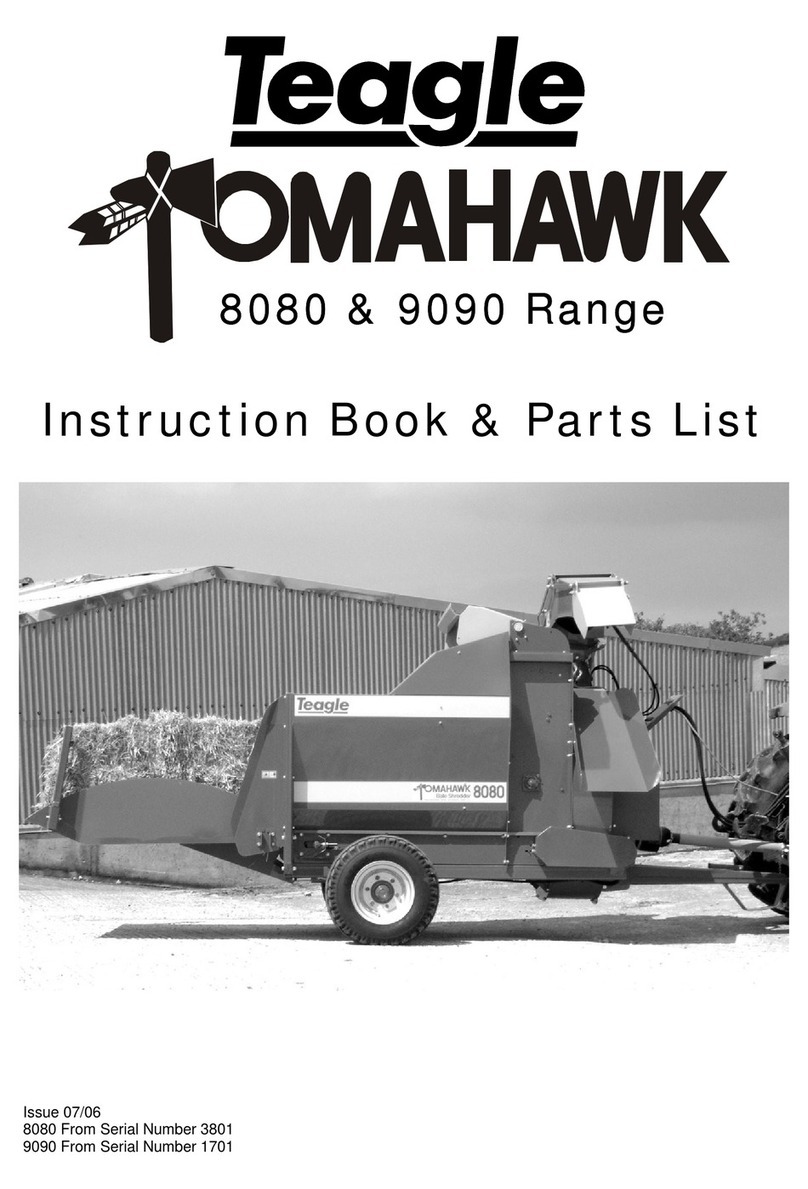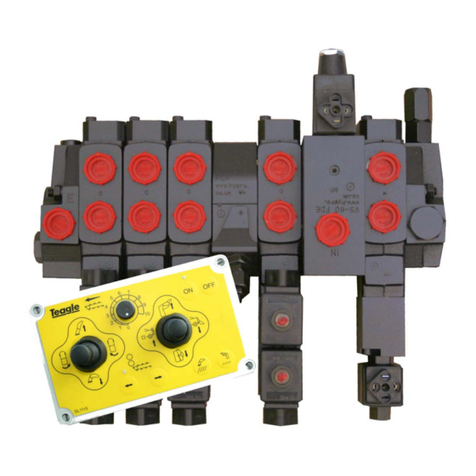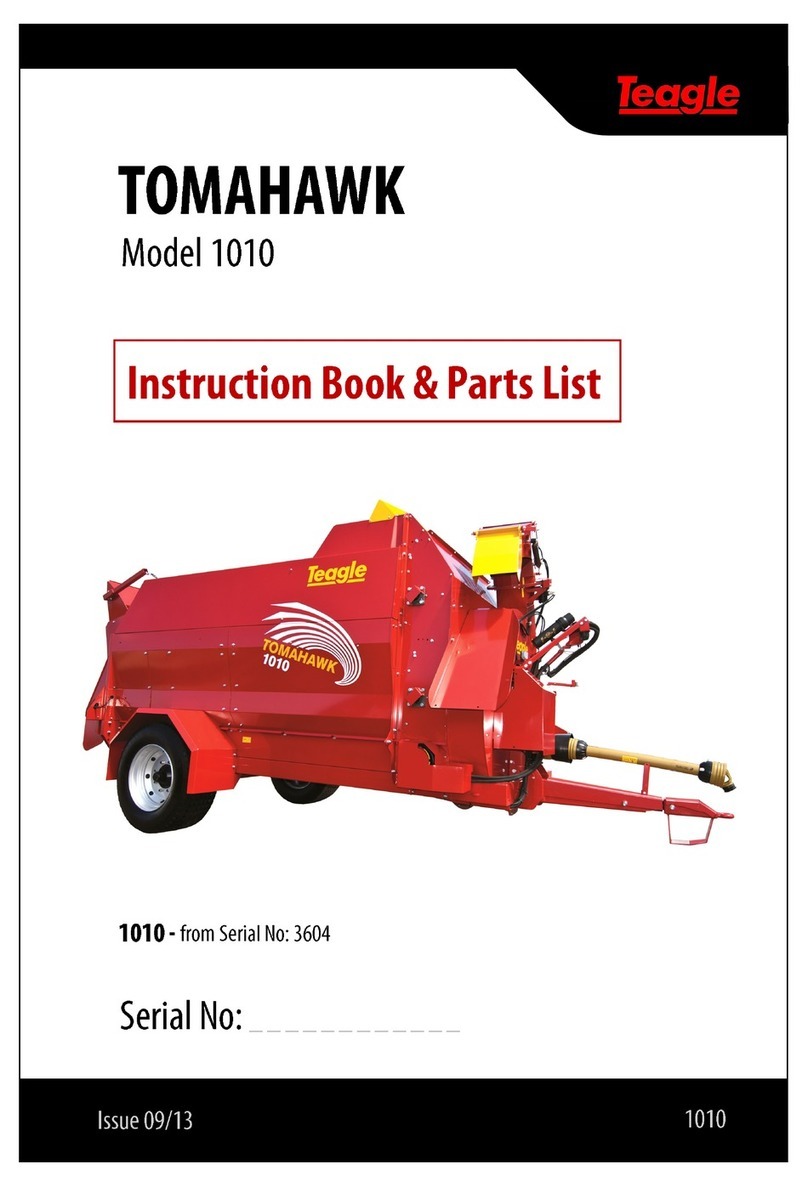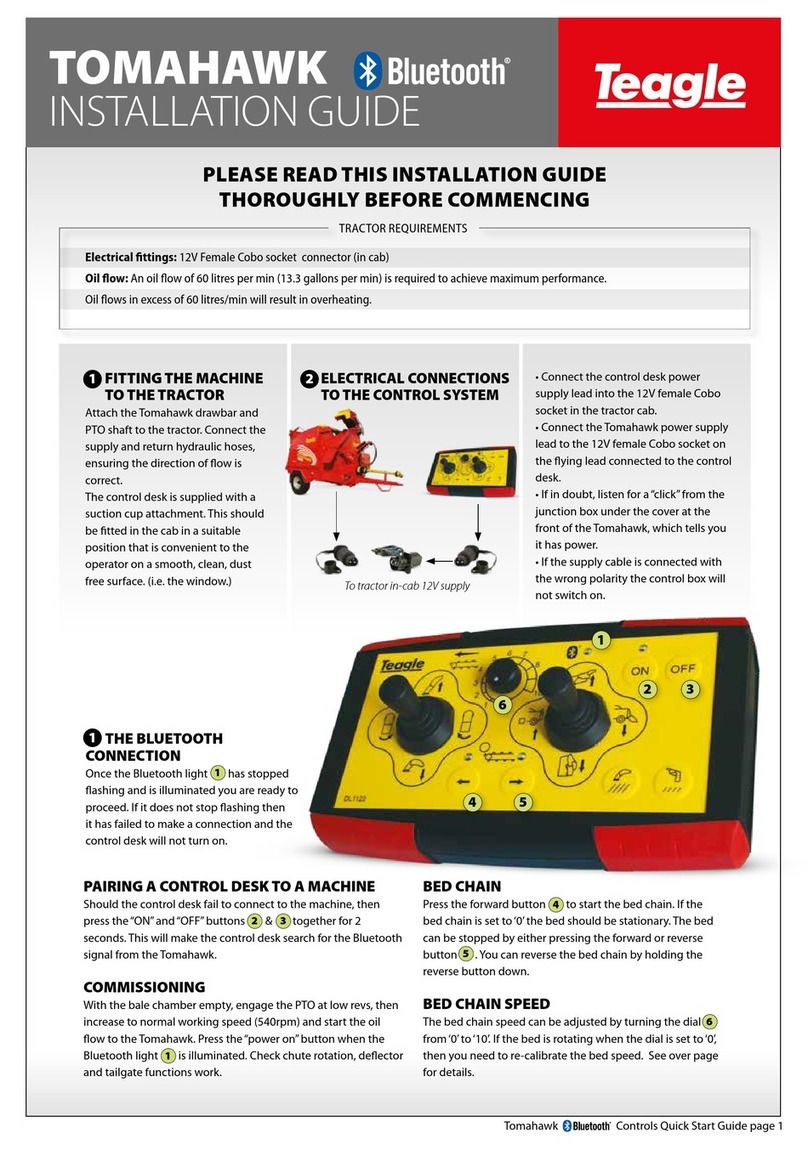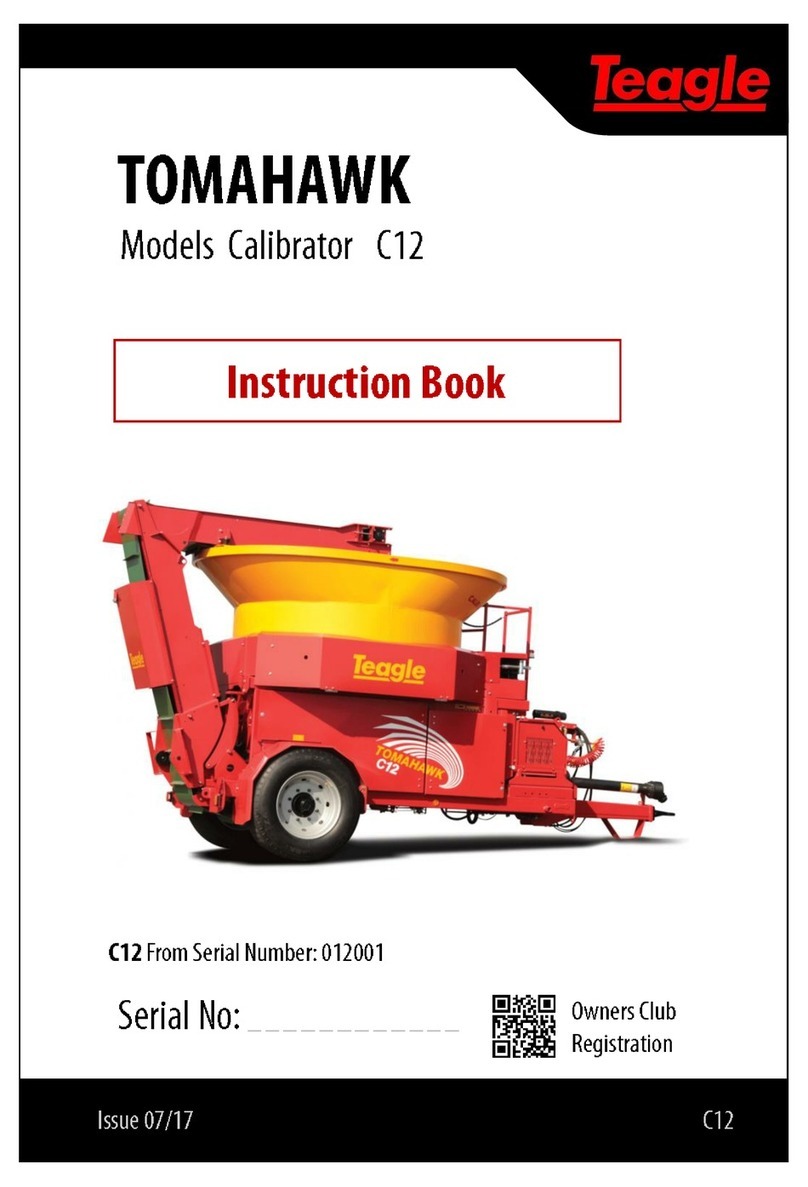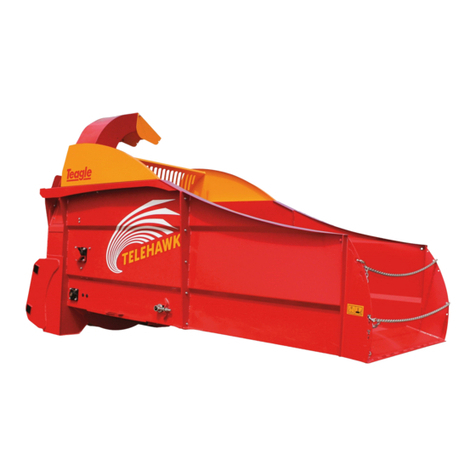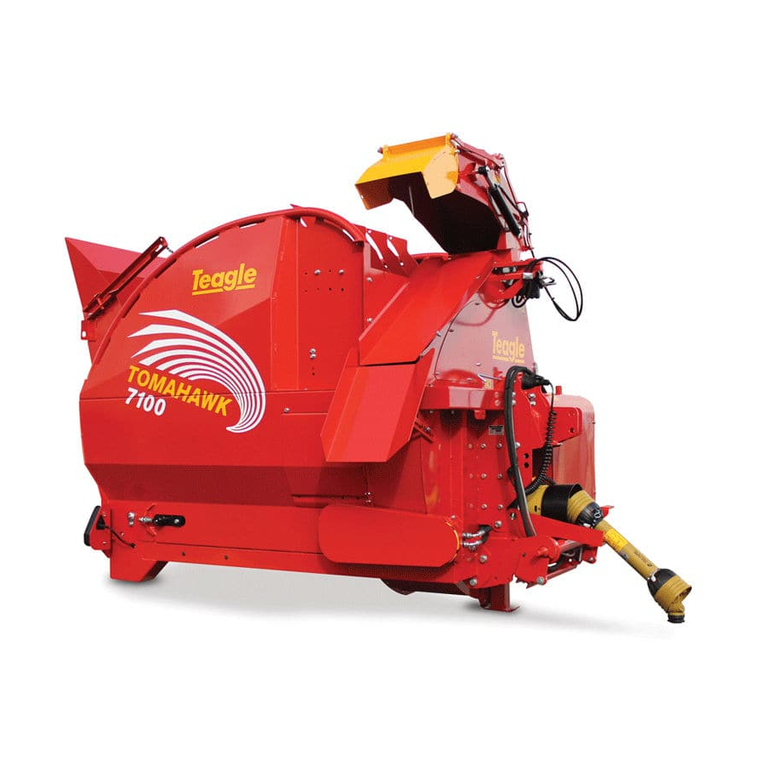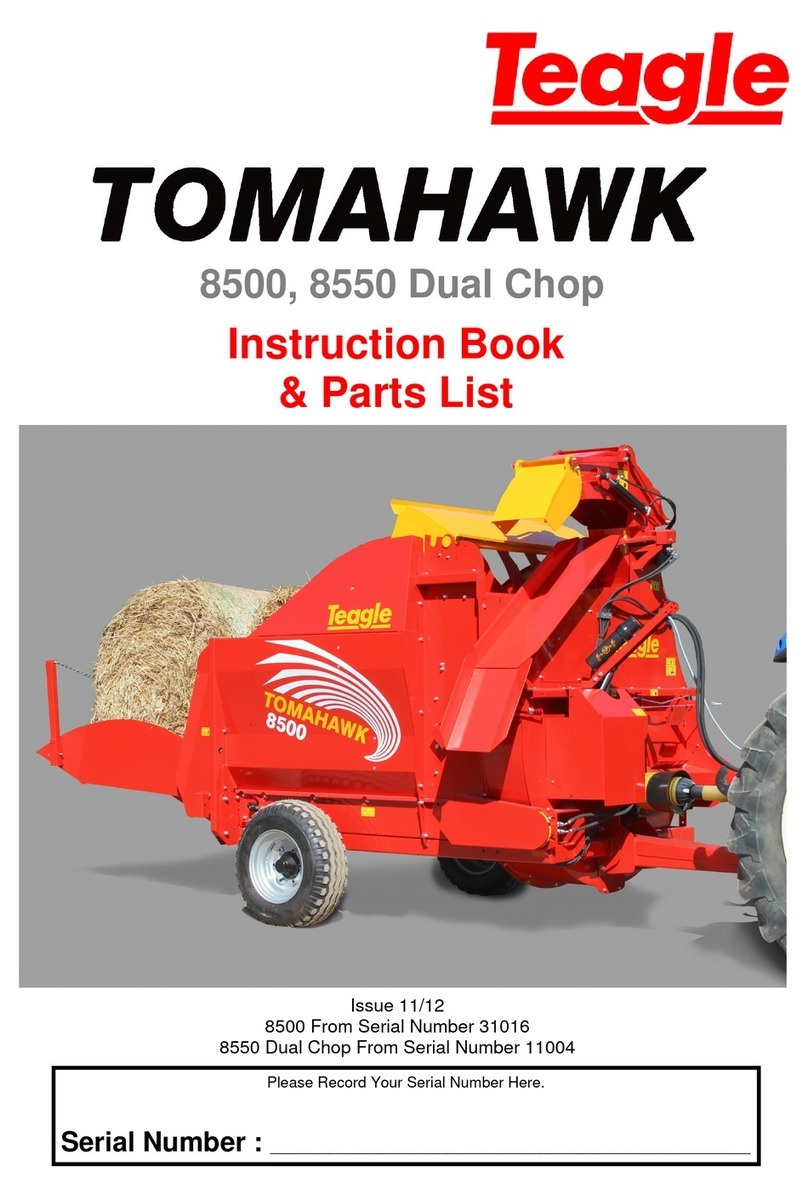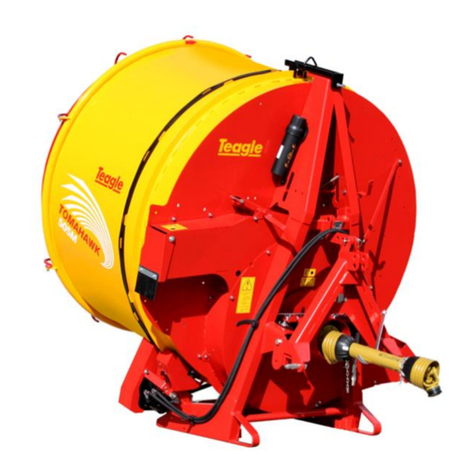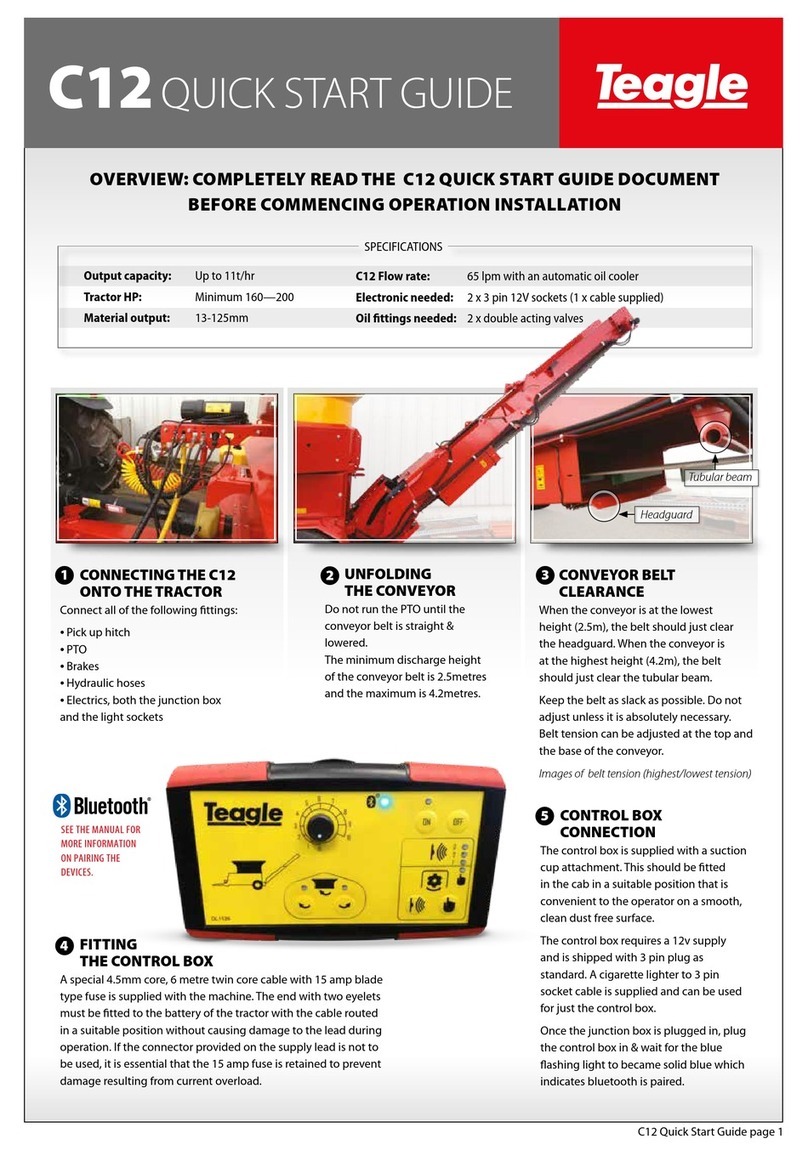
SAFETY FIRST!
1. READ THE INSTRUCTION BOOK THOROUGHLY
before attempting to operate or carry out any
maintenance on the machine. If you do not
understand any part of this manual, ask your dealer
for assistance.
2. ALWAYS CARRY OUT SAFE
MAINTENANCE. Never clean, adjust or
maintain the machine until the engine has been
stopped, the machine come to rest, lowered to the
ground and the key removed.
3. NEVER WORK UNDER A MACHINE
RAISED ON THE LOADER unless it is
securely supported.
4. NEVER OPERATE THE MACHINE WITH ANY
PARTS OR GUARDS MISSING. Check that all
guards are in good condition and in place before
operating the machine.
5 OPERATE SAFELY. Before starting work, check
that there are no persons or animals in the
immediate vicinity of the machine or loader. Always
maintain full control of the loader and machine.
Ensure that you know how to stop the loader and
machine quickly in case of emergency.
6. NEVER STAND BETWEEN THE MACHINE
AND THE LOADER WHEELS.
8. DO NOT WEAR LOOSE OR RAGGED CLOTHING
9. BEWARE OF DUST. Under dusty conditions,
keep the cab windows and doors closed. The use of
a dust mask conforming to EN149 is strongly
recommended.
10. BEWARE OF HIGH NOISE LEVELS. Some
loader/implement combinations give noise
levels in excess of 90dB at the operator's ear.
Under such circumstances, ear defenders
should be worn. Keep cab windows and doors
closed to reduce noise level.
Throughout this handbook, the term `loader' is used to
refer to the power source used to drive the machine. It
does not necessarily refer to a conventional agricultural
loader, telescopic handler or loader.
HEALTH AND SAFETY AT WORK
Our equipment is designed so as to conform with
current Health & Safety Regulations and therefore
poses no significant hazard to health when properly
used. Nevertheless, in the interests of all concerned, it
is essential that equipment of our manufacture is used
in accordance with the instructions that are supplied or
are available from our Technical Staff.
Legislation requires that all operators are instructed in
the safe operation, cleaning and maintenance of
equipment and machines. This handbook forms part of
that instruction and it must be read and understood
before fitting the machine onto the loader or attempting
to use it.
Your supplier is responsible
for carrying out any necessary pre-delivery inspection,
fitting the machine onto the loader and test running.
The supplier must also give instruction in the safe use,
maintenance and adjustment of the machine.
In the interests of safety, please ensure that the
instructions referred to above are brought to the
attention of all your employees who are to use the
equipment. We recommend that the use of this
equipment is restricted to capable trained operatives.
Persons under the age of sixteen should not operate the
machine and should be kept away from where it is being
used.
WARRANTY
The standard warranty is against faulty materials and
workmanship. Components supplied as part of the original
machine, but manufactured by another company, e.g.
hydraulic motors, valve blocks etc, are subject to the
original manufacturer's conditions and warranty.
Where repairs are carried out under warranty:-
a) Claims for the fitting of non original parts will not be
considered unless prior agreement has been obtained.
b) The repairer must be advised that the work is to be the
subject of a warranty claim beforehand.
c) Any claim must be submitted within four weeks of the
repair.
d) The damaged parts must be retained for inspection and
returned carriage paid if required.
The right to withdraw warranty is reserved if:-
a) Non-original parts are fitted.
b) The machine has been abused, badly maintained or
used for purposes other than that for which it was
designed.
